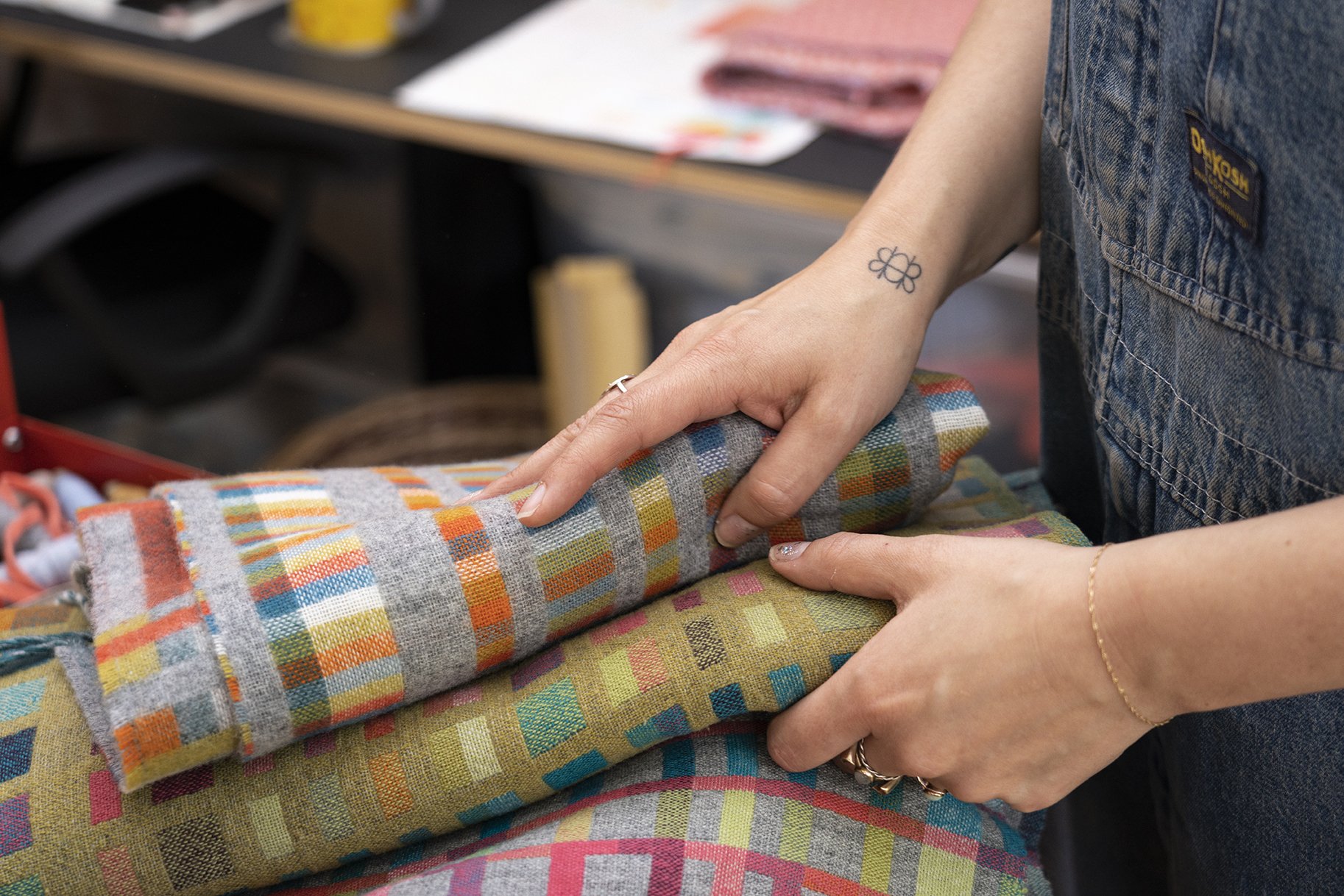
Caring For Your Woven Textiles
Material Properties:
I love working with (and wearing) natural materials; mostly lambswool, merino and cashmere. All renewable fibres with natural properties; breathable, soft, insulating, hypoallergenic and compostable! When woven, washed and finished these materials fluff and plump to give a warm and cosy finish.
To ensure long lasting enjoyment and to extend the life of your woven woollies I recommend that you show your scarves, blankets and other woven accessories a little regular TLC, following the below advice:
How to wash your scarf or blanket:
All of my work is recommended dry clean only.
I recommend that you follow the dry clean only advice on any of my woven woollens unless you’re an experienced wool-washer.
The professional finish on mill woven pieces makes it tricky to achieve the same finish after washing at home, however my hand woven pieces can be carefully washed at home on a wool wash or gently by hand, using a specialist wool detergent (I use Woolite when hand finishing after weaving). Use a low heat (about 30 degrees celcius) and not too much friction, as too much agitation can cause shrinkage and felting to occur. Small marks or stains should be treated gently and as quickly as possible to first soak up the stain. Remember rubbing can cause the firbres to felt together.
How to dry:
If you have decided to wash your scarf or blanket, please remember to dry flat and away from too much heat, a gentle reshaping before drying is recommended. Drying or hanging over a clothes dryer (or similar) can cause the piece to become misshapen or to stretch. When dry a little steam from an iron or clothes steamer can refresh and plump the fibres, but remember ironing will flatten the piece and remove an element of it’s three dimensional texture.
Protection from pests:
Annual preemptive protection is your best way of avoiding a munching on your precious woolly wovens! I use lavender balls, sachets and cedar sprays in my storage areas and store my woollens in vac-pac bags in the summer when not in regular use.
The biggest enemy of wool is the dreaded clothes moth! Moths love laying their eggs on natural fibres, which then hatch and eat away at woollen treasures creating the much feared moth-hole. Moths are particularly attracted to any areas with dirty marks, persperation or dust. The best way to protect your woollens from the moth is to store items clean and dry, away from dust, checking for dirty marks or areas of perspiration before storage. For extra protection gently clean and store your woolens when not in use. I use lavender and ceder scented balls and sachets in my boxes, drawers and cupboards, and use vac-pac bags for summer storage.
What to do if you spot a moth/eggs/moth hole in your woven piece:
On first sight of a moth egg, hole or munching I put the effected piece in the freezer for two weeks wrapped in plastic, to kill any remaining eggs. Then thoroughly clean and vaccume the area it was found in, spraying with a moth killer and adding repellent balls or sprays to the area. When out of the freezer wash your piece as advised. If there are any holes then a good old fashioned darn is always a treasured way of repairing loved pieces. There are lots of ‘how to darn’ workshops available on youtube and in some local craft shops and textile shops.
Storage:
When not in use, (in a warm summer time etc) I first check for moths then store all of my woolens in vacuum-packed storage bags, with a few lavender or ceder scented moth balls for good measure, ready to get out and enjoy at the first sign of a chill in the air come autumn.



